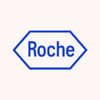
A Study To Evaluate Efficacy, Safety, Pharmacokinetics, And Pharmacodynamics Of Satralizumab In...
Generalized Myasthenia GravisThis study will evaluate the efficacy, safety, pharmacokinetics, and pharmacodynamics of satralizumab compared with placebo in participants with generalized myasthenia gravis (gMG).

A Phase 1b/2 Study of BGB-11417in Monotherapy and in Various Combinations With Dexamethasone and...
Relapsed/Refractory Multiple MyelomaStudy consists of two parts, a part 1 dose escalation and a part 2 cohort expansion in combination with dexamethasone and carfilzomib intravenously across two cohorts with a monotherapy component as well.

Orelabrutinib and Sintilimab in Relapsed or Refractory Central Nervous System Lymphoma
Primary Central Nervous System Hodgkin LymphomaThis phase Ib/II trial is evaluating the efficacy and side effect of orelabrutinib and sintilimab as possible treatments for relapsed or refractory central nervous system lymphoma.

P-BCMA-ALLO1 Allogeneic CAR-T Cells in the Treatment of Subjects With Multiple Myeloma
Multiple MyelomaPhase 1 study comprised of open-label, dose escalation, multiple cohorts of P-BCMA-ALLO1 allogeneic T stem cell memory (Tscm) CAR-T cells in subjects with relapsed / refractory Multiple Myeloma (RRMM).

Pembrolizumab in Combination With Gemcitabine in People With Advanced Mycosis Fungoides or Sézary...
Mycosis FungoidesMycosis Fungoides/Sezary Syndrome3 moreThe purpose of this study is to find out whether the combination of pembrolizumab and gemcitabine is an effective treatment for mycosis fungoides and Sézary syndrome.

Safety and Efficacy Study of Human Umbilical Cord-Derived Mesenchymal Stem Cells(BC-U001) for Rheumatoid...
Rheumatoid ArthritisBC-U001 is an allogeneic fresh human umbilical cord-derived mesenchymal stem cell product, which showed therapeutic potential for rheumatoid arthritis(RA) based on its anti-inflammatory, immunomodulatory and tissue repair activities. The primary objective of this open-label, non-randomized, dose-escalation study is to evaluate the safety and tolerability of a single intravenous infusion of BC-U001 for RA patients using a 3+3 design.

Targeted Immunotherapy After Myeloablative TBI-Based Conditioning & AlloHCT in CAYA With High Risk...
T-cell Acute Lymphoblastic LeukemiaT-Cell Acute Lymphoblastic LymphomaA Phase I trial to determine the safety of targeted immunotherapy with daratumumab (DARA) IV after total body irradiation (TBI)-based myeloablative conditioning and allogeneic hematopoietic cell transplantation (HCT) for children, adolescents, and young adults (CAYA) with high risk T-cell acute lymphoblastic leukemia (T-ALL) or T-cell lymphoblastic lymphoma (T-LLy). Pre- and post-HCT NGS-MRD studies will be correlated with outcomes in children, adolescents, and young adults with T-ALL undergoing allogeneic HCT and post-HCT DARA treatment. The study will also evaluate T-cell repertoire and immune reconstitution prior to and following DARA post-HCT treatment and correlate with patient outcomes.

Open-label Study Comparing Iberdomide, Daratumumab and Dexamethasone (IberDd) Versus Daratumumab,...
Multiple MyelomaThis is a multicenter, two-stage, randomized, controlled, open-label, Phase 3 study comparing the efficacy and safety of iberdomide in combination with dexamethasone and daratumumab (IberDd) versus daratumumab, bortezomib, and dexamethasone (DVd) in participants with relapsed or refractory multiple myeloma (RRMM).

A Study to Access the Safety and Efficacy of CT0590 in Patients With Relapsed and/or Refractory...
Relapsed and/or Refractory Multiple MyelomaThis is an open-label, single arm study to evaluate the safety and tolerability of treatment with CT0590 CAR T in patients with relapsed and/or refractory multiple myeloma.

Isatuximab Plus Pomalidomide and Dexamethasone Association for Patients With AL Amyloidosis Not...
AL AmyloidosisThis phase 2 study ain to evaluate the efficacy of Isatuximab plus Pomalidomide and Dexamethasone (IPd), in patients with AL amyloidosis not in VGPR or better after any previous therapy. It will enrolled 46 patients (34 in France and 12 in Australia) through 15 sites (11 in France and 4 in Australia).
